#ArtTools
Explore tagged Tumblr posts
Text
Ready to Take Your Art to the Next Level? 🎨✨
Remaker AI is revolutionizing the way artists create digital art. If you’ve been looking for an easy, intuitive tool to transform your ideas into stunning artwork, this is for you! Whether you're just starting or already an expert, Remaker AI makes creativity simple and fun.
✅ Super easy to use ✅ Perfect for digital artists of all skill levels ✅ Turn your imagination into incredible art instantly
Check out my full Remaker AI review and see how it can supercharge your creative process in 2025! Don’t miss out on this amazing tool for artists.
👉 Read the full Rmaker AI Review Here
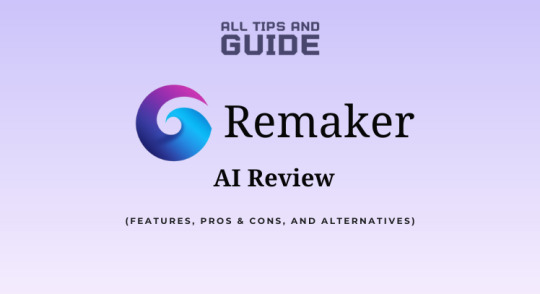
#RemakerAI#AIArt#DigitalArtTools#ArtCreation#CreativeTech#AIForArtists#ArtTools#ArtReview#DigitalCreativity#AIArtTool#alltipsandguides
0 notes
Text
Hey designers 👋
Let’s talk about one of the best tools in Photoshop: The Object Selection Tool
🌱 For beginners: Just draw a box around the thing you want. It does the work. 🧠 For pros: Use the 2024 AI features to auto-select people, pets, even objects without clicking. 💫 Add “Select & Mask” for smoother edges. Chef’s kiss
I still remember when I first used it — game changer for my workflow. Now? Can’t design without it.
1 note
·
View note
Photo

An Italian Baroque painter, Caravaggio was known for his innovative use of chiaroscuro and intense realism. Active in the late 16th and early 17th centuries, his works displayed emotional depth and a dramatic play of light and shadow.. Visit www.OTONGO.net for more information.
#TrueArt#OriginalCreations#LightAndShadow#CaravaggioInspired#ArtisticIdentity#BaroqueBeauty#CreativeMind#AuthenticityInArt#CaptureYourVision#OTONGONet#ArtTools#ProtectYourArt#VisualStorytelling#FromTheStudio#InnovativeArt#CreativeIntegrity#PassionatePainter#HistoricalArt#EmbraceYourStyle#GenuineArt
0 notes
Text
Starting Your Surface Pattern Design Journey?
No gatekeeping, no "you must spend $$$ to succeed" - just honest reviews and real talk about prices, features, and what you actually need at each stage of your journey.
✨ Included in our findings:
Complete price comparison (from $0 to $$$)
Which tools are actually worth the money
The truth about free alternatives
Hardware requirements (spoiler: you might already have what you need!)
Our personal favorites for different skill levels
Want to know more? We've put together a complete guide on the blog. Come join us on this creative adventure - we're all learning together! 🎨
#surfacepattern#patterndesign#digitalart#procreate#creativeresources#artistresources#digitaltutorial#artistsoftumblr#creativeblog#designresources#patternmaking#creativetutorial#arttools#designtools#creativeprocess#designblog#artistadvice#patterndesigner#surfacedesign#creativecareer
0 notes
Text
Unlock your creativity with the perfect spray paint caps and nozzles! 🎨✨ Whether you're doing fine line work or large-scale murals, the right nozzle makes all the difference. From fat caps to skinny tips, customize your spray game and bring your vision to life!
0 notes
Text

Editor's choice | Sharing 😘😘
✨Our markers are the perfect tool for bringing your ideas to life! With a wide range of colors to choose from, you can create anything you imagine. 🎨🖍️
0 notes
Text
Escape Motions Home Page Explorer on 8 October 2024!
👇👇👇
youtube
#homepageexplorer#DigitalArt#PaintingSoftware#Rebelle#FlamePainter#Amberlight#Inspirit#CreativeSoftware#ArtTools#ArtSoftware#DigitalPainting#Youtube
0 notes
Text
What are viscosity cups and Zahn cups, and how are they used in measuring liquid viscosity?



Viscosity cups and Zahn cups are essential tools used in various industries to measure the viscosity, or thickness, of liquids. These tools are particularly important in sectors like paints, coatings, and chemicals, where the consistency of a liquid can significantly affect the final product's quality.
Viscosity Cup:
Purpose: A viscosity cup is designed to measure the time it takes for a certain volume of liquid to flow out through an orifice at the bottom. The time is then used to calculate the viscosity.
How It Works: The liquid is poured into the cup, and once it starts flowing out, you start a timer. When the flow stops, the timer is stopped, and the elapsed time is recorded.
Application: This method is commonly used for more general viscosity measurements, especially in industries like paint and ink production.
Zahn Cup:
Purpose: The Zahn cup is a specific type of viscosity cup, often handheld, and it provides a quick and straightforward method to measure viscosity.
How It Works: You dip the Zahn cup into the liquid and then lift it out, allowing the liquid to flow through a small hole at the bottom. The time it takes for the liquid to stop flowing is recorded as the Zahn cup time.
Application: Zahn cups are frequently used in the coatings industry, particularly for quality control processes. They are preferred for their ease of use and quick results.
Key Differences:
Design: A Zahn cup is a subset of viscosity cups but is designed to be handheld and is typically smaller.
Usage: While both measure viscosity, Zahn cups are more specialized and often used for field measurements or quick checks, whereas other viscosity cups might be used in more controlled laboratory settings.
These tools are invaluable for ensuring that liquids have the right flow characteristics, which is crucial in applications like painting, where the consistency of the paint can directly impact the quality of the finish.
If you’re working in an industry where viscosity matters, understanding these tools is essential for maintaining quality and consistency.
#ViscosityMeasurement#ArtTools#PaintingPerfection#SmoothFinish#ZhanCup#CupViscosity#ArtSupplies#CoatingTools#PaintingEssentials#FluidControl#PerfectConsistency#ArtTechnique#CoatingIndustry#DIYArt#QualityControl#PrecisionTools#CreativeProcess#Craftsmanship#ProTools#EfficientTools#IndustrialEquipment#MeasureRight#PaintingTips#ArtisticPrecision#ViscosityTesting
0 notes
Text
A dirty palette is a happy palette👏😌
汚れたパレットは、幸せなパレット👏😌

2 notes
·
View notes
Text
Magic in Adobe Photoshop! Create with Words Now
Photoshop got cool new tricks! Type “a rainbow” 🌈 and it pops up! Take away stuff you don’t like. No stress, just fun.
Make art fast and easy.
#photoshopfun#aiedit#arttools#photoshopmagic#creativeediting#photoshop2025#quickart#photoeditingtools#easyediting#PhotoClippingRetouching
0 notes
Text
Calligraphy Brush Basics: Master the Art of Brushes
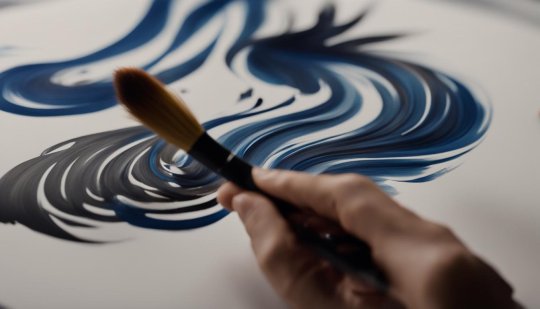
Calligraphy Brush Basics: A Beginner's Guide to Mastering Brush Lettering
Welcome to our comprehensive guide on calligraphy brush basics. In this section, we will delve into the world of calligraphy brushes and equip you with the knowledge and skills to master their use. Whether you are a beginner or looking to refine your calligraphy techniques, this guide will provide you with essential tips and insights to help you create beautiful brush strokes and maintain your brushes with care. Key Takeaways: - Understanding different brush types is crucial for selecting the right tool for your calligraphy projects. - Mastering brush strokes involves techniques such as creating light upstrokes and heavy downstrokes. - Proper brush care and maintenance are vital for preserving the quality and longevity of your brushes. - Exploring brush materials and reputable brands will help you make informed purchasing decisions. - Brush pens and paintbrushes offer convenience and versatility in calligraphy and brush lettering.
Understanding Calligraphy Brush Types
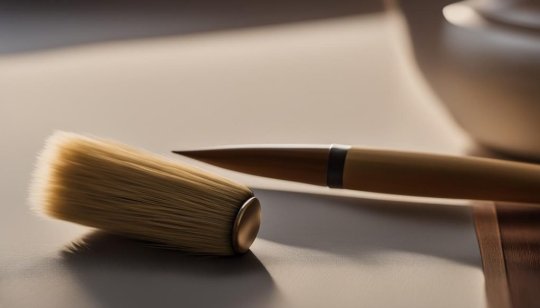
When it comes to calligraphy, the type of brush you use plays a crucial role in achieving the desired effects. There are various types of calligraphy brushes available, each with its own unique characteristics and uses. By understanding the different brush types, you can choose the right tool for your calligraphy projects and elevate your skills to the next level. Here are some common calligraphy brush types: - Sumi Brush: Traditional Japanese brush made from animal hair, known for its versatility and ability to create thin to thick strokes. - Flat Brush: A wide brush with flat bristles, perfect for creating bold and expressive strokes. - Round Brush: Has a pointed tip and is ideal for creating precise and delicate letterforms. - Brush Pen: Offers the convenience of a marker with the flexibility of a brush, allowing for smooth and controlled strokes. Choosing the right brush depends on your personal preference and the style of calligraphy you want to achieve. Experimenting with different brush types can help you discover your preferred tool and unleash your creativity.
Mastering Calligraphy Brush Strokes

Mastering calligraphy brush strokes is crucial for achieving beautiful and expressive lettering in your calligraphy projects. With the right techniques, you can create a variety of strokes that add depth, dimension, and style to your writing. Whether you are a beginner or looking to improve your skills, this section will guide you through the essential brush strokes used in calligraphy. To start, let's explore the basics of creating light upstrokes and heavy downstrokes. Light upstrokes are created by applying minimal pressure while moving the brush upwards. On the other hand, heavy downstrokes require more pressure as you move the brush downwards. This contrast between light and heavy strokes is what gives calligraphy its unique look and feel. Another important technique to master is angling the brush for different effects. By holding the brush at a certain angle, you can achieve variations in line width and texture. Experiment with different angles to create thin, delicate lines or bold, confident strokes. Remember to practice and experiment to find the angles that work best for you and the desired effect you want to achieve. Quote: "The art of calligraphy lies in the mastery of brush strokes. Each stroke carries the essence of your message, expressing emotions and bringing words to life." - Calligraphy Master Pressure is another crucial element in brush stroke mastery. Apply varying degrees of pressure to the brush as you make your strokes to create depth and variation in your letterforms. By pressing lightly, you can achieve thin lines, while applying more pressure will result in thicker lines. This play of pressure adds visual interest and a dynamic quality to your calligraphy. Remember that mastering calligraphy brush strokes takes time and practice. The more you experiment with different techniques and strokes, the more confident you will become in your abilities. So don't be afraid to make mistakes and explore new styles. Embrace the artistry of calligraphy and let your brush strokes tell your story. Table: Calligraphy Brush Stroke Techniques Brush Stroke Description Light Upstrokes Made by applying minimal pressure while moving the brush upwards, creating thin lines. Heavy Downstrokes Require more pressure as you move the brush downwards, resulting in bold and thick lines. Angling the Brush Hold the brush at different angles to achieve variations in line width and texture. Pressure Variation Apply different degrees of pressure to create depth and variation in line thickness.
Tips for Brush Care and Maintenance
Proper care and maintenance of your calligraphy brushes is crucial to ensure their longevity and optimal performance. By following these tips, you can keep your brushes in excellent condition and ready for your next calligraphy project. 1. Clean your brushes regularly To prevent the buildup of dried ink or paint in your brush bristles, it's important to clean your brushes after each use. Rinse them thoroughly with warm water and gently massage the bristles to remove any residual color. Avoid using harsh soaps or cleaners, as they can damage the brush hairs. Allow the brushes to air dry completely before storing them. 2. Store your brushes properly When not in use, store your calligraphy brushes in a dry and clean container with the bristles facing upward. This helps to maintain the shape and prevent the bristles from becoming misshapen or bent. Avoid storing your brushes in airtight containers or with the bristles pressed against any surface, as this can cause the bristles to warp or lose their flexibility. 3. Protect the bristles When using your brushes, be mindful of how much pressure you apply and avoid dragging the bristles against rough surfaces. This can lead to fraying or splitting of the bristles, which affects the brush's performance. Additionally, avoid dipping your brush too far into ink or paint, as this can cause the liquid to seep into the ferrule (metal part) of the brush and damage the bristles. Brush Care Do's Brush Care Don'ts - Clean your brushes after each use - Store brushes with bristles facing upward - Allow brushes to air dry completely - Use a brush holder or container for storage - Avoid using harsh soaps or cleaners - Don't store brushes in airtight containers - Avoid pressing bristles against surfaces - Don't dip brushes too far into ink or paint By following these simple tips for brush care and maintenance, you can prolong the lifespan of your calligraphy brushes and ensure they continue to deliver smooth and precise strokes. Taking the time to properly care for your brushes will not only save you money in the long run, but it will also contribute to the overall quality of your calligraphy work.
Exploring Brush Materials and Brands

When it comes to calligraphy brushes, the choice of materials can greatly impact the quality and performance of your strokes. Understanding the different brush materials available can help you make informed decisions when selecting the right brush for your calligraphy projects. In this section, we will explore various brush materials commonly used in calligraphy and recommend reputable brands that offer high-quality options. Brush Materials Brushes for calligraphy can be made from a variety of materials, each with its own unique characteristics and advantages. Some common brush materials include: - Weasel Hair: Weasel hair brushes are known for their fine, flexible bristles, making them ideal for creating delicate and precise strokes. They are often preferred by experienced calligraphers who value control and precision in their work. - Goat Hair: Goat hair brushes are softer and more absorbent, making them suitable for larger brush strokes and bold lettering. They are known for their ability to hold a generous amount of ink, resulting in rich and vibrant lines. - Mixed Hair Brushes: Mixed hair brushes combine different types of bristles, offering a balance between stiffness and softness. They can provide versatility and are often favored by calligraphers looking for a brush that can handle various styles and techniques. While these are just a few examples, there are many other brush materials available, each with its own unique properties. It's important to experiment with different materials to find the brush that suits your personal preferences and calligraphy style. Reputable Brush Brands When it comes to purchasing calligraphy brushes, it's important to choose reputable brands that prioritize quality and craftsmanship. Here are some well-known brush brands that are highly regarded in the calligraphy community: Brand Description Zig Zig is a trusted brand known for its high-quality calligraphy brushes and brush pens. They offer a wide range of options catering to different brush materials and styles, ensuring that you can find the perfect tool for your calligraphy needs. Kuretake Kuretake is a long-standing Japanese brand that specializes in traditional calligraphy brushes. Their brushes are renowned for their craftsmanship and durability, making them a popular choice among professional calligraphers. Ratnanjali Ratnanjali is an Indian brand known for its high-quality calligraphy brushes made from natural hair. Their brushes are widely praised for their smoothness and precision, allowing calligraphers to create beautiful letterforms effortlessly. These are just a few examples of reputable brush brands, and there are many other options available. It's recommended to explore different brands and read reviews to find the one that suits your needs and budget.
Using Brush Pens for Calligraphy
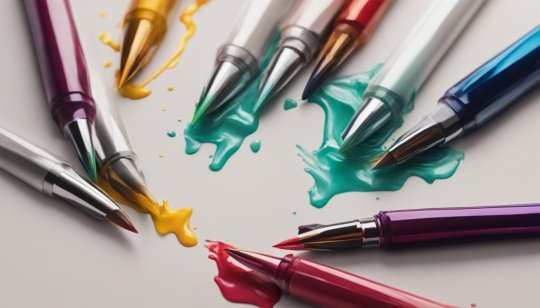
Brush pens are a popular tool among calligraphy enthusiasts for their convenience and versatility. These pens combine the control of a traditional brush with the convenience of a pen, making them ideal for both beginners and experienced calligraphers. The brush pen's flexible bristles allow for a wide range of brush strokes, making it easy to achieve beautiful lettering results. One of the key benefits of using brush pens for calligraphy is their ease of use. Unlike traditional brushes, brush pens do not require separate ink wells or constant dipping into ink. They are pre-filled with ink, ready to use with just a gentle squeeze or a twist of the pen. This makes them a convenient choice for on-the-go calligraphy or when you need to quickly create lettering without the hassle of ink bottles and brushes. When selecting brush pens for calligraphy, it's important to consider the size and firmness of the brush tip. Different brush pens offer varying levels of flexibility, which can have an impact on the stroke width and style of your lettering. Experiment with different brush pen brands and tip sizes to find the one that suits your preferred calligraphy style. To get started with brush pens, begin by practicing basic brush strokes and letterforms. Start with light pressure to create thin upstrokes, and apply more pressure for thicker downstrokes. With practice and experimentation, you'll develop a sense of control and consistency in your strokes. Brush pens are also great for creating blended color effects by layering different ink colors on top of each other. Benefits of Brush Pens for Calligraphy Considerations when using Brush Pens - Convenient and portable - No need for separate ink wells - Easy to use for beginners - Wide range of brush stroke possibilities - Selecting the right brush pen tip size - Experimenting with different brands - Practicing control and consistency in strokes - Layering colors for blended effects "Brush pens offer the perfect balance of convenience and versatility for calligraphy enthusiasts. With their pre-filled ink and flexible bristles, they make it easy to achieve beautiful lettering results without the hassle of traditional brushes." Exploring Brush Pen Brands There are numerous brush pen brands available in the market, each offering their own unique features and qualities. Some popular brush pen brands include: - Tombow Dual Brush Pens: Known for their blendable ink and flexible brush tips, Tombow Dual Brush Pens are a favorite among calligraphers and artists. - Kuretake ZIG Brushables: These brush pens feature dual brush tips with one end offering a brush tip and the other a fine point, providing versatility for different calligraphy styles. - Pentel Arts Pocket Brush Pen: With its fine nylon brush tip, the Pentel Arts Pocket Brush Pen offers excellent control and precision for detailed lettering. When selecting brush pen brands, consider factors such as ink quality, brush tip durability, and availability of refillable ink cartridges. It's also helpful to read online reviews or seek recommendations from fellow calligraphers to find brands that suit your preferences and needs.
Exploring Paintbrushes for Brush Lettering
https://www.youtube.com/watch?v=BlM4KpD046Y When it comes to brush lettering, don't limit yourself to traditional calligraphy brushes. Paintbrushes can also be a fantastic tool for creating beautiful letterforms with a unique texture and style. In this section, we will delve into the world of paintbrushes and explore the types and techniques that can elevate your brush lettering. Types of Paintbrushes There are various types of paintbrushes available, each with its own characteristics and suitability for specific lettering styles. Here are some popular options: - Round Brushes: Known for their versatility, round brushes have a pointed tip that allows for precise control over thin and thick strokes. They are suitable for a wide range of lettering styles, from delicate scripts to bold, expressive calligraphy. - Flat Brushes: With their rectangular shape, flat brushes are ideal for creating broad, consistent strokes. They are perfect for lettering that requires a more uniform appearance, such as block lettering or modern calligraphy. - Fan Brushes: If you're looking to add texture and flair to your brush lettering, consider using fan brushes. These brushes have bristles spread out in a fan shape, allowing you to create unique effects and add depth to your letterforms. Techniques and Tips Here are some techniques and tips to enhance your brush lettering using paintbrushes: - Vary Pressure: Experiment with applying different levels of pressure to the brush while lettering. Light pressure creates thin, delicate strokes, while heavier pressure results in thicker, more dramatic lines. - Blend Colors: Paintbrushes offer the opportunity to blend colors seamlessly. Dip your brush in multiple shades and gently mix them on paper to create stunning gradient effects in your lettering. - Try Dry Brushing: Dry brushing involves using a relatively dry brush with minimal water or paint. This technique creates a textured, rough appearance in your lettering, adding a unique touch to your designs. By exploring the world of paintbrushes for brush lettering, you can unlock new possibilities and bring a fresh perspective to your calligraphy. Don't be afraid to experiment with different brush types and techniques to find your unique style and create lettering that truly stands out.
Digital Options for Hand-Lettered Calligraphy
With the advancement of technology, digital options have opened up new possibilities for hand-lettered calligraphy. Digital calligraphy allows you to create beautiful lettering using digital platforms such as Procreate, making it accessible and convenient for both beginners and experienced artists. By combining traditional calligraphy techniques with digital tools, you can unlock endless creative opportunities and explore the world of digital art. If you prefer working digitally or want to expand your calligraphy skills beyond traditional methods, digital calligraphy is a fantastic option. It offers features like limitless color palettes, customizable brushes, and the ability to easily undo and edit your work. The versatility of digital tools allows you to experiment with various styles and effects, helping you develop your unique calligraphy style. Learning digital calligraphy may seem intimidating, but there are plenty of resources available to help you get started. Online tutorials, YouTube videos, and online communities can provide guidance and inspiration. Additionally, Procreate offers a wide range of brush packs specifically designed for calligraphy, making it easy to achieve realistic and high-quality lettering. Whether you choose to embrace traditional calligraphy techniques or explore the digital realm, the key is to practice and experiment. Combining both traditional and digital methods can lead to unique and stunning calligraphy creations. So, grab your digital pen and start your journey into the world of hand-lettered calligraphy!
Practicing Calligraphy Letterforms
You've learned about the basics of calligraphy brushes and mastered various brush strokes. Now it's time to put your skills to practice by focusing on calligraphy letterforms. By practicing different letter strokes and connecting letterforms, you'll develop proficiency and confidence in creating beautiful and consistent lettering in calligraphy. Start by practicing angled downward strokes, which are the foundation of many letters. These strokes give your letters a clean and elegant appearance. Experiment with creating light upward strokes to add contrast and variation to your letterforms. Connecting letterforms smoothly is another important aspect of calligraphy. Pay attention to the spacing between letters and strive for consistency in your letter connections. It's recommended to practice calligraphy letterforms regularly to refine your technique and muscle memory. Set aside dedicated practice sessions where you focus solely on creating letterforms. Use calligraphy guide sheets or templates to help you maintain consistent letter heights and proportions. Remember, calligraphy is an art that requires patience and practice. Each stroke and letterform you create is an opportunity to improve and express your unique style. Keep practicing and experimenting with different brush strokes and styles to develop your own artistic voice in calligraphy. Sample Calligraphy Letterforms Practice Sheet: Uppercase Lowercase A B C D E F G H I J K L M N O P Q R S T U V W X Y Z a b c d e f g h i j k l m n o p q r s t u v w x y z Practice makes perfect. Don't be discouraged if your letterforms don't turn out exactly as you imagined at first. With time and practice, you'll see improvement. The journey to mastering calligraphy letterforms is an ongoing process, but the rewards are well worth it.
Advanced Letterforms and Techniques
Now that you have mastered the basic letterforms in calligraphy, it's time to take your skills to the next level with advanced letterforms and techniques. Read the full article
0 notes
Photo

Claude Monet, a cornerstone of Impressionism, revolutionized the art of painting with his focus on light and color, capturing ephemeral moments in nature. His works reflect the changing qualities of light and atmosphere, particularly in his beloved gardens in Giverny during the late 19th century.. Visit www.OTONGO.net for more information.
#Impressionism#Artistry#ColorfulLife#TrueVoices#CreativityUnleashed#OTONGO#Giverny#NatureInArt#InspiredByNature#LightAndColor#BrilliantBrushstrokes#EmbraceOriginality#ArtTools#MotivationalArt#EvokeBeauty#ArtisticExpression#MonetMagic#VisionaryArtist#NatureLover#ArtCommunity
0 notes
Text
📱💻 Pattern Design Tech Guide: Our Journey from Corporate IT to Creative Digital Art
Hey Tumblr fam! Remember that moment when your design software crashed right in the middle of creating the perfect pattern? cue internal screaming 😅 We've been there – like, literally last week.
Coming from a corporate IT background, we thought we needed ALL the fancy gear to create beautiful patterns. Spoiler alert: we were so wrong! After countless coffee-fueled experiments (and some questionable purchasing decisions), we're sharing our real, unfiltered tech journey.
What you'll find in our latest blog: ► The software we actually use (from free alternatives to "someday" dream tools) ► That time we tried creating complex patterns with basic tools (it's okay to laugh) ► Our cozy corner setup that proves you don't need a fancy studio ► iPad vs Desktop showdown (plot twist: they can be friends!) ► The tools we're still saving up for (hello, Wacom Cintiq, our beloved distant dream 👀)
This isn't one of those "expert guides" because honestly? We're still learning every day. Consider this more like sitting down with friends who happen to be equally obsessed with pattern design and tech tools. We're sharing what works, what doesn't, and what we wish someone had told us when we started.
Come geek out with us about design tools! And please share your own experiences – we're always eager to learn from this amazing community! 💕
Link to full guide: https://design2repeat.com/pattern-design-tech-tools-essential-software
Want to share your own tech setup? Reblog and tell us about your favorite design tools! We'd love to hear what works for you! 🎨✨

#digitalart#patterndesign#surfacepatterndesign#artistsoftumblr#digitaldrawing#creativetechnology#designresources#arttools#digitalartist#creativeprocess#artblog#designblog#creativecommunity#artistresources#techart#digitalcreative#designtools#artistworkspace#creativespace#digitaldesign#artjourney#designerlife#creativebusiness#smallbusiness#patterndesigner#surfacedesign#creativetips#arttutorial#designtutorial#artresources
0 notes
Text

ArtFlow AI
It would be advisable for ArtFlow AI, if it were to be launched on the general market, to be a threat, let alone be referred to as a disruptor to the traditional forms of making digital art through software. This particular software has many facets and has the leeway to control commands. This puts artists at large in a position, especially where they have to think outside the box. Read more..
1 note
·
View note
Text
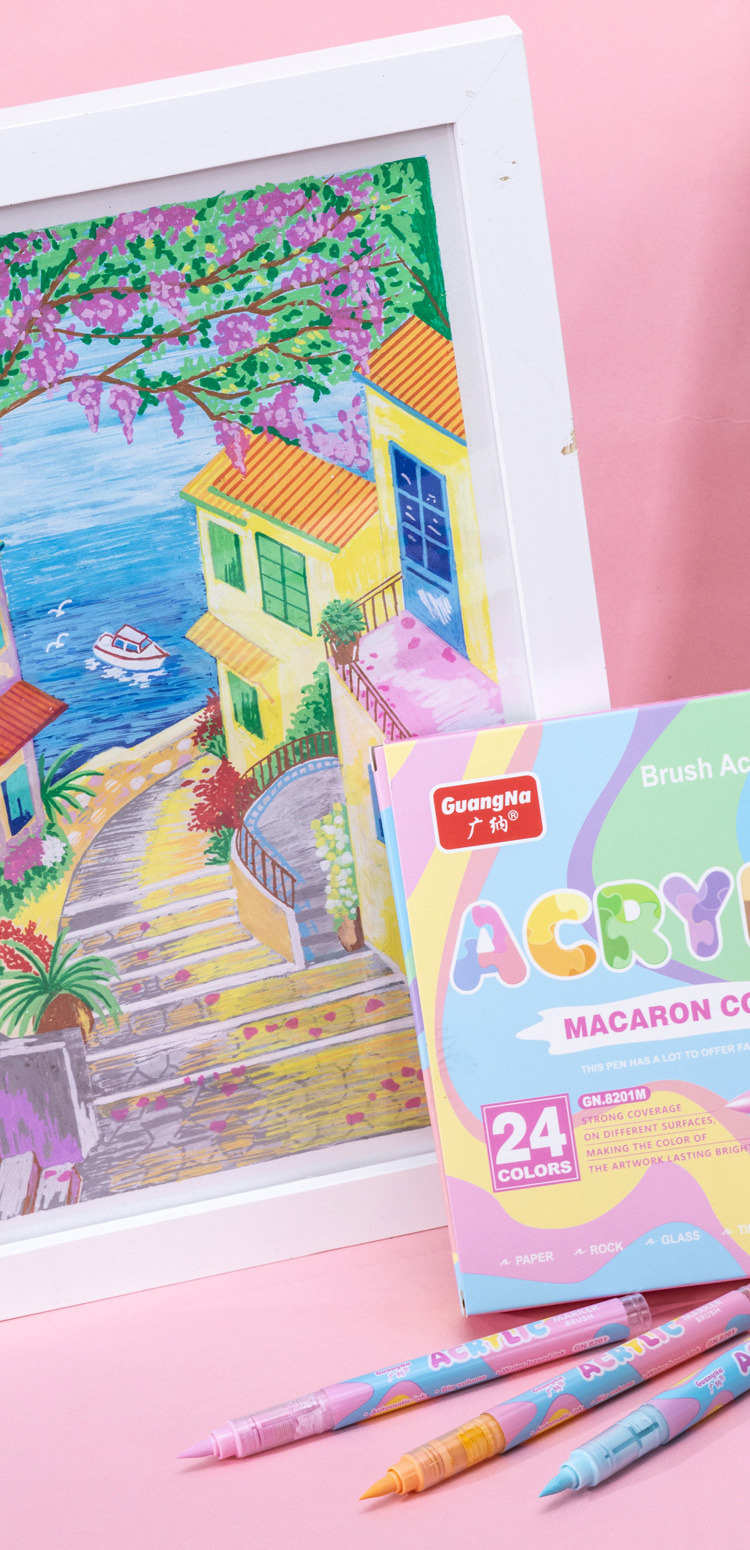
Editor's choice | Sharing 😘😘 #HEYDUCK
Unleash your creativity with our vibrant and long-lasting direct feed acrylic markers! Perfect for coloring, doodling, and adding a pop of color to any project. 🌈🖍️
0 notes
